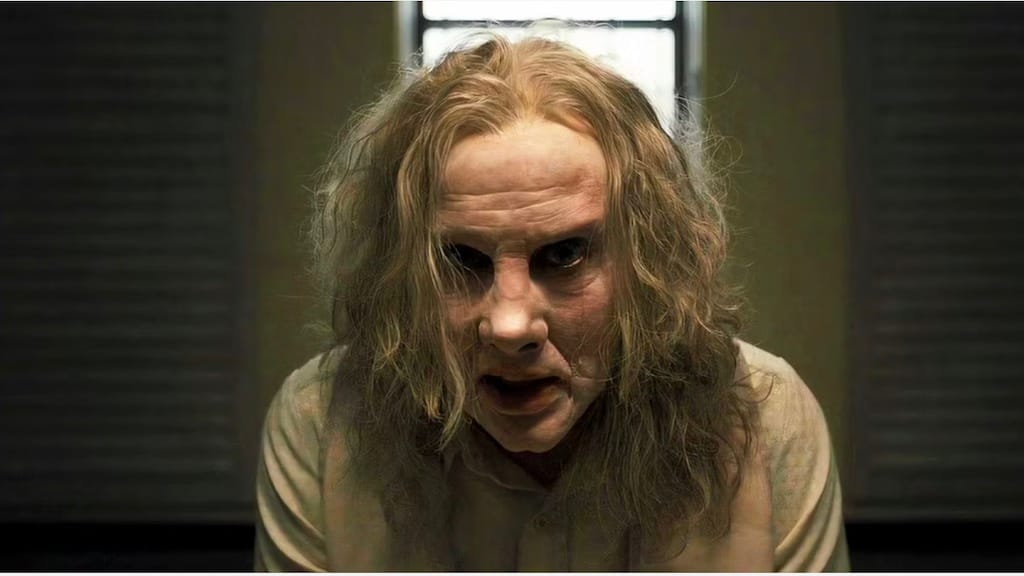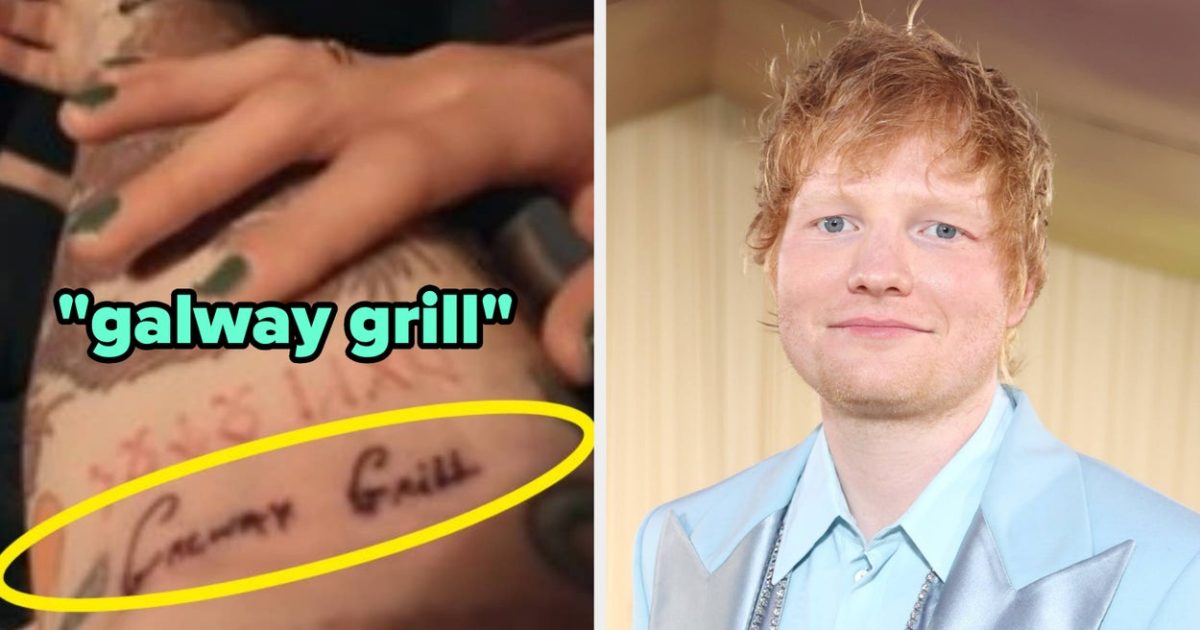
Guillermo del Toro’s Best, Most Overlooked Movie Is Now Waiting for You on Prime Video
Sep 10, 2024
Almost 25 years after releasing his debut film, writer-director Guillermo del Toro’s ninth feature, The Shape of Water, claimed Best Picture at the 2017 Academy Awards (among three other wins, including Best Director). The occasion marked del Toro’s first time standing on this particular awards stage; 11 years earlier, his sociopolitical dark fairy tale Pan’s Labyrinth had been nominated for two Oscars but won neither. Even though taking home a golden statuette doesn’t automatically determine a film’s value, del Toro scoring some of the American film industry’s top prizes was a triumph for a filmmaker whose unabashedly humane and eerily beautiful celebration of the horror, fantasy, and romance genres had already earned him a spot in that very same iconography.
The Shape of Water’s critical and financial success wasn’t a comeback for del Toro, who hadn’t gone anywhere. But for fans of Crimson Peak, the film immediately preceding Shape of Water in del Toro’s oeuvre, his triumph felt a little like delayed justice for his most unfairly overlooked movie. Although critics praised Crimson Peak’s art direction and moody atmosphere, del Toro’s lavish Gothic romance — romance, not horror — earned only $75 million against its $55 million budget. The R-rated spectacle faced tough box office competition from surprise PG-13 hits like Ridley Scott’s The Martian and Steven Spielberg’s Bridge of Spies, and, in all likelihood, also suffered from misguided marketing choices that depicted it as an indie horror film laden with jump scares rather than what it truly was: a tragic love story with ghosts. This poor movie, an impeccable love letter to an abandoned subgenre, seemed to come and go without nearly the splash it warranted — both on its own merits and as a one-movie microcosm of a lauded visionary. More than any other del Toro project to date, Crimson Peak represents his origins and passions, distilled.
What Is Guillermo del Toro’s ‘Crimson Peak’ About?
Image via Universal Pictures
Set primarily in early 1900s England, Crimson Peak follows Edith Cushing (Mia Wasikowska), an independent and unconventional young woman brushing up against the edges of her restrictive Edwardian society. For one, Edith is an aspiring author, with horror as her genre of choice. When the (very male) publishing industry tells her to inject romance into her morbid tales, their dismissal is no shock to anyone except Edith. Determined to prove them wrong, her worldview shifts to accommodate love once she develops an unexpected spark with the enigmatic but charming Thomas Sharpe (Tom Hiddleston). Wooed, wed, and whisked back to her husband’s crumbling family home of Allerdale Hall in record time, all appearances indicate Edith is living out a romance sweeping enough to put the likes of Jane Eyre and Rebecca to shame.
Yet our heroine carries a burdensome secret. Ghosts have visited Edith since her childhood, and the desperate spirits trapped in Allerdale Hall, ominously nicknamed Crimson Peak, won’t leave her alone. Surrounded by growing danger and cut off from any outside aid, Edith must unearth the evil sins haunting her husband’s past — especially the secrets chaining Thomas to his esoteric sister, Lucille (Jessica Chastain).
‘Crimson Peak’ Perfectly Captures a Throwback Gothic Atmosphere
According to a Deadline exclusive announcing Crimson Peak, del Toro cited 1963’s The Haunting (based on Shirley Jackson’s seminal novel The Haunting of Hill House) and The Innocents (an adaptation of Henry James’ short story The Turn of the Screw) as not only masterclass examples of the haunted house film but some of his main tonal and aesthetic inspirations. The writer-director told Deadline:
“I’ve always tried to make big-sized horror movies like the ones I grew up watching. Films like
The Omen, The Exorcist
and
The Shining
, the latter of which is another Mount Everest of the haunted house movie. I loved the way that Kubrick had such control over the big sets he used, and how much big production value there was. I think people are getting used to horror subjects done as found footage or B-value budgets. I wanted this to feel like a throwback. […] It will allow me to play with the conventions of the genre I know and love, and at the same time subvert the old rules.”
And play del Toro did. Much like Pan’s Labyrinth and The Shape of Water, a chilling fairy tale grandeur runs through Crimson Peak like an exposed vein. Every frame from cinematographer Dan Laustsen bursts with an unabashed love for the Gothic subgenre. The flicker of a tall candle in the dark, the trailing hem of a billowy nightgown, or blood dashed upon the snow while the cruel winter winds roar; the house itself “bleeds” as a metaphor for all the lives it has swallowed up over time. The historical (yet semi-fantastical) setting is a perfect showcase for del Toro’s most evocative trademarks, like production design with enough unique detail to carry the narrative, an eye-popping wardrobe symbolic of the characters’ arcs and lush color palettes conveying tone.
In less astute hands, this reverence could feel like empty nostalgia for a movie style that Hollywood, for the most part, left behind. Between del Toro’s passion for film history and his personal artistry, however, Crimson Peak doesn’t merely revel in the glory of creaking staircases and Byronic husbands. It evokes the brooding, bewitching, and escapist essence of its inspirations without feeling like a retread of either the Gothic classics or del Toro’s catalog, thanks in large part to the director turning his environment into an active, contributing character. Gothic falls apart without a troubling yet beautiful setting, and Thomas E. Sanders’ architecture makes Allerdale Hall — and the troubled souls within its isolated walls — soar in ways we’ve rarely seen onscreen before.
That said, del Toro consciously incorporated elements from his largest formative influences. The list is abundant and sumptuous: he credits literary pioneers Ann Radcliffe, Daphne du Maurier, and Charlotte Brontë, director Mario Bava, Victorian painters and architecture, and his own family’s experiences with the supernatural. Edith’s last name is an homage to Hammer Horror veteran Peter Cushing, and the effortlessly sensual Hiddleston embodies every morally gray but delicately tortured heartthrob of the time, whether it be Mr. Rochester or Vincent Price circa The Tomb of Ligeia. Lucille completes this precariously balanced trio by fulfilling a Mrs. Danvers archetype alongside some Flowers in the Attic affectations.
‘Crimson Peak’ Is a Complicated Gothic Romance, Not a Traditional Horror Film
Image via Universal Studios
Every del Toro venture is a passion project in some capacity. Crimson Peak’s intent rings especially distinct: it’s a love letter to the art of storytelling itself. Edith’s role as an author can’t be a coincidence, especially one whose passion is writing horror instead of what mainstream interests dictate. Nor is her arc of realizing her work does, in fact, need a love story to give it true life. All stories must mean something, so why not celebrate one of the cornerstone emotions of del Toro’s filmography? As early as his first feature, Cronos, del Toro made a practice of loving and humanizing the figures society deems monstrous. Cronos’ protagonist, Jesús Gris (Federico Luppi), is an elderly man who accidentally becomes a vampire and must choose between the scintillating promise of eternal life or the mortal family he still loves.
Naturally, Jesús and Edith are nothing alike in that regard. But despite some tense sequences where Edith communicates with the phantasms roaming Allerdale Hall, Crimson Peak, like Cronos’s combination of the gory and the divine, is preoccupied with exploring the ways love can empower, heal, and redeem. Edith is already an assured young woman at the film’s start, but after her father’s death, she draws renewed strength from her genuine connection to Thomas. She feels accepted, and, what’s more, wanted, for the very quirks that always drew scorn in the past.
Thomas, meanwhile, experiences a healthy relationship for the first time. Unlike Elisa (Sally Hawkins) in The Shape of Water or even Hellboy’s Liz (Selma Blair), Edith doesn’t challenge society’s beauty conventions by romantically seeking out a creature who’s inhuman in appearance but boasts a deeply kind heart. Edith realizes too late that she’s fallen for an emotionally grotesque figure; but Thomas, while complicit in his crimes, longs for redemption. He’s an anti-hero who’s as trapped within his ancestral legacy as any ghost. And unlike Cronos’ harrowed Jesús, he’s unable to escape his toxic bindings. If love can redeem, then the reverse holds true. Acts committed in the name of the so-called “monstrous love” that “makes monsters of us all” make humans rot away long before they become corpses — a prominent motif in the director’s work.
‘Crimson Peak’ Authentically Merges Guillermo del Toro’s Themes
Image via Universal Pictures
Because, in true del Toro fashion, Crimson Peak’s heinous-seeming ghosts are innocent victims and the traditionally attractive humans are caught in an obsessive cycle of malice, jealousy, and survival instinct. Lucille and Thomas’s crimes are suited to the Gothic suspense/romance story structure, a genre largely defined by women and dedicated to exploring women’s anxieties about autonomy, men, and marriage — and no less thematically relevant to del Toro’s narrative concerns than Pan’s Labyrinth, The Devil’s Backbone, and The Shape of Water. The first two films take place against the backdrop of the Spanish Civil War, while Shape of Water centers its action during the Cold War when xenophobia, homophobia, racism, and misogyny ran especially rampant in America.
All three double as fairy tale parables; Crimson Peak is no different. Thomas and Lucille’s misdeeds parallel the “Bluebeard” folk story, but textually, Edith bears some similarity to Carlos (Fernado Tielve) from Devil’s Backbone. Carlos is an orphaned boy who, like Edith, receives warnings from a murdered ghost seeking justice. Likewise, Ofelia (Ivana Baquero) of Pan’s Labyrinth is a reincarnated mythical princess able to see both the hidden majesty and the perverted horror inherent to the world. True fairy tales didn’t sanitize their moral warnings, a fact del Toro has favored and elevated over the years.
Closing the circle of his works is 2022’s Academy Award-winning Pinocchio, which Del Toro and co-director Mark Gustafson reinterpret through the lens of 1930s Fascist Italy. A generous Wood Sprite (Tilda Swinton) creates Pinocchio (Gregory Mann) to love and comfort Geppetto (David Bradley), a grieving woodcarver who lost his son 20 years earlier in a World War I airstrike. Despite Pinocchio’s earnest and innocent attempts to spread unconditional love, the military forcibly recruits him — seeing only an immortal soldier, not a miracle with the heart of a young boy. In Crimson Peak, Lucille pardons her toxicity by claiming that “the horror was for love.” But Lucille’s love isn’t worth the cost. True love uplifts and frees, and is often found in unexpected places and with the benevolent creatures disdained by the worst of humanity. This echoes across del Toro’s resume; even the founding principle behind Pacific Rim, his sci-fi action epic, is empathetic connection and peaceful collaboration.
‘Crimson Peak’ Represents Guillermo del Toro’s Past, Present, and Future
As the misunderstood masterpiece of del Toro’s pantheon, Crimson Peak blends his strongest traits into one enthralling whole. There’s the intricate splendor of Pan’s Labyrinth, the beating heart behind Pacific Rim, the romantically inclined, feminine strength of The Shape of Water, and The Devil’s Backbone’s devastating convergence of the personal, supernatural, and sociopolitical. Crimson Peak champions finding beauty in the grotesque and embraces both how destructive or redemptive love can be — themes that will almost undoubtedly surface in del Toro’s upcoming take on Frankenstein, perhaps the definitive Gothic meditation on humanity. In a way, Crimson Peak feels like a film made solely for del Toro, an amalgamation tribute to his creative touchstones that walk hand-in-hand with his singular imagination. Del Toro’s most underrated work is a perfect example of a director in his prime.
Crimson Peak is available to stream on Prime Video in the U.S.
Watch on Amazon Prime
Publisher: Source link
"We Despised Each Other So Much That It Read As Love": 13 Costar Duos Who Did NOT Get Along
Diane Kruger said, "It kind of sucked. He's dead, so I can say that. But he wasn't the most pleasant person."View Entire Post › Disclaimer: This story is auto-aggregated by a computer program and has not been created or edited…
Dec 25, 2024
19 Best Experience Gifts for Everyone on Your List
Our writers and editors independently determine what we cover and recommend. When you buy through our links, E! may earn a commission. Learn more. As the holidays approach, the last loved one on your list is usually the hardest person to…
Dec 25, 2024
Celebs With Embarrassing Tattoo Mistakes Revealed
If read vertically from top to bottom and horizontally from right to left, which is how Japanese is read, the tattoo translates roughly to say "ring seven fingers." However, if the tattoo is read horizontally from left to right and then…
Dec 24, 2024
Bruce Willis’ Wife Emma Shares Family Photos Amid His Health Battle
Bruce Willis’ wife Emma Heming Willis is cherishing the good times. Almost two years after the Die Hard actor’s wife, his ex-wife Demi Moore, and his kids Rumer Willis, 36, Scout Willis, 33, Tallulah Willis, 30, Mabel Willis, 12, and Evelyn Willis, 10, announced that…
Dec 24, 2024











